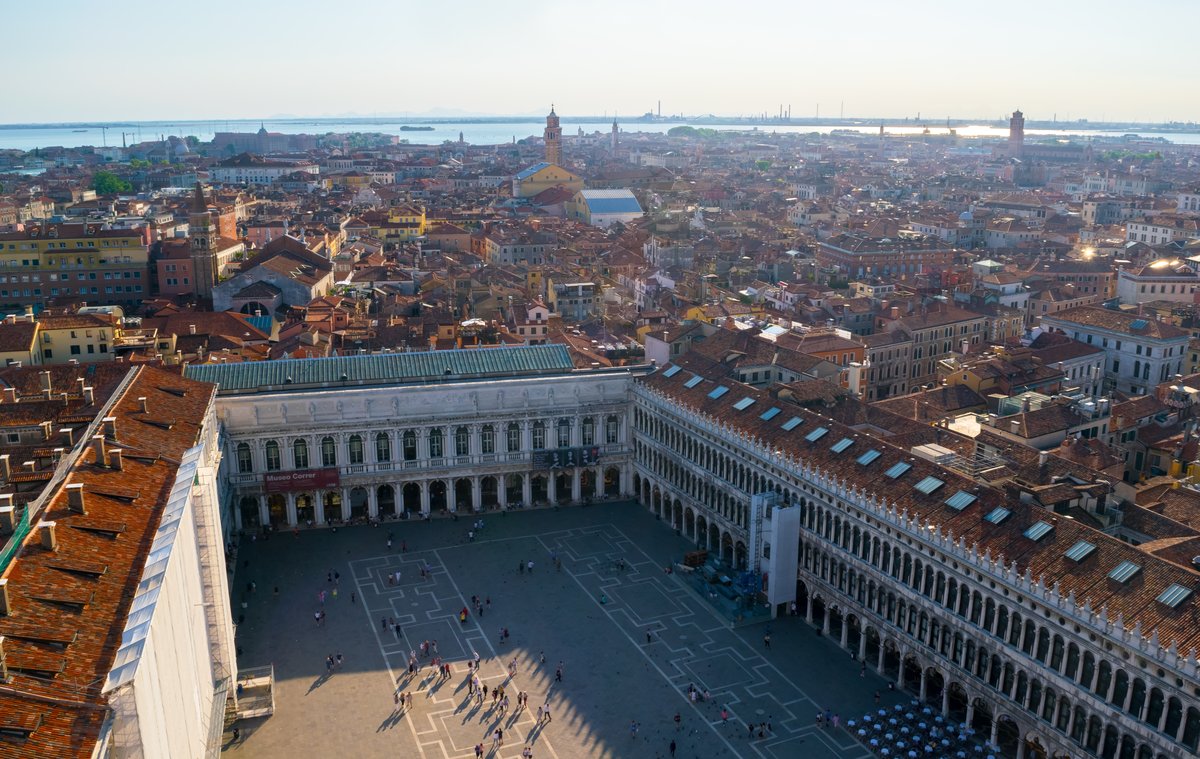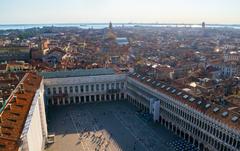
San Moisè Venice: Visiting Hours, Tickets, and Historical Sites Guide
Date: 14/06/2025
Introduction
San Moisè, just steps from Venice’s famed Piazza San Marco, is a Baroque masterpiece and one of the city’s most historically significant churches. With its exuberant façade, remarkable artistic treasures, and centuries-old story, San Moisè offers visitors a unique window into Venice’s artistic, religious, and social evolution. This guide delivers everything you need to plan your visit: from opening hours and ticket tips to historical context, accessibility, and travel advice. Whether you’re an art lover, history buff, or curious traveler, San Moisè is an essential stop in Venice.
Contents
- Historical Overview
- Early Origins and Foundation
- Medieval and Baroque Transformations
- Architectural & Artistic Highlights
- Cultural and Social Significance
- Notable Figures and Events
- Practical Visitor Information
- Visiting Hours
- Tickets and Admission
- Accessibility
- Guided Tours
- Travel Tips & Nearby Attractions
- Visuals and Media
- FAQs
- Conclusion and Call to Action
- Sources and Further Reading
Historical Overview
Early Origins and Foundation
San Moisè traces its roots to the late 8th century, when a modest wooden church dedicated to San Vittore was erected by early Venetian settlers. By the 10th century, it was rededicated to Moses, a unique dedication reflecting Venice’s religious diversity and the influence of its patron, Moisè Venier (Summer in Italy). This rare veneration of a biblical prophet as a “saint” underscores Venice’s ties to both Eastern and Western traditions (Visit Venezia).
Medieval and Baroque Transformations
Through the Middle Ages, San Moisè evolved architecturally, transitioning from its early wooden form to a stone structure in the 10th century and then undergoing further renovations in the 12th century, paralleling Venice’s architectural shift from Byzantine to Romanesque and Gothic influences (Lions in the Piazza).
The most dramatic transformation occurred in the 17th century. In the aftermath of Venice’s devastating 1630–31 plague, the influential Fini family sponsored a grand Baroque redesign. Architect Alessandro Tremignon and sculptor Heinrich Meyring created the church’s famously ornate façade, completed in 1668, with its dense layers of statuary and reliefs (Venice the Future; Venice City Tours).
Architectural & Artistic Highlights
The Façade: Baroque Drama and Patronage
San Moisè’s façade is among the most elaborate in Venice. Designed by Tremignon and adorned with Meyring’s sculptures, it features allegorical figures, biblical scenes, and portraits of the Fini family. The bold bust of Vincenzo Fini, the patron, is a rare act of self-commemoration in Venice, where public statues were typically reserved for the state (Venice City Tours). The presence of camels carved above the portal adds a whimsical, exotic touch (Summer in Italy).
The English critic John Ruskin once called the façade “the most ungainly church in Venice,” highlighting its controversial theatricality (Lonely Planet).
Interior Art & Treasures
- High Altar: Meyring’s monumental altarpiece shows Moses receiving the Tablets, a dynamic ensemble melding sculpture, painting, and natural rock (Venice Travel Guide).
- Sculptures: Noteworthy are Antonio Corradini’s emotionally charged Pietà (1723) and bronze reliefs by the Roccatagliata brothers.
- Paintings: Tintoretto’s “Washing of the Feet” and Palma il Giovane’s “The Supper” adorn side chapels, exemplifying Venetian Baroque painting (Lonely Planet).
Funerary Monuments
San Moisè holds the tombstone of John Law, the Scottish financier behind France’s “Mississippi Bubble,” who spent his final years in Venice (Venice the Future). This surprising connection draws history and finance enthusiasts alike.
Cultural and Social Significance
San Moisè’s grandeur reflects the ambitions of Venice’s patrician families—using religious patronage to secure both spiritual merit and social prestige (Venice the Future). Its proximity to Piazza San Marco placed it at the heart of Venetian civic and religious life. During the Counter-Reformation, the square outside was used for book burnings, highlighting the church’s role in enforcing orthodoxy (Venice City Tours).
The dedication to Moses links the church symbolically to Venice’s identity as a city shaped by water, with Moses leading people through the sea—a powerful metaphor for Venetians (CNN).
Notable Events and Figures
- John Law: Scottish economist and adventurer, buried here after fleeing scandal in France.
- Vincenzo Fini: Merchant and patron, immortalized on the façade.
- Heinrich Meyring: Baroque sculptor responsible for the church’s most iconic statuary.
- The church has survived plagues, political upheaval, and Venice’s notorious floods, each chapter leaving marks on its structure and story.
Practical Visitor Information
Visiting Hours
- Open: Usually 9:00 AM to 5:30 PM daily; last entry 30 minutes prior to closing.
- Variations: Hours may change for religious services, events, or holidays. Always check the official tourism site before your visit.
Tickets and Admission
- Entry: Free of charge; donations are welcome and support conservation.
- Tours: Guided tours are available for a fee and are highly recommended for deeper insight.
Accessibility
- Mobility: The main entrance has a ramp, but the historic nature means some interiors may have steps or uneven flooring. Venice’s general terrain (bridges, narrow alleys) may pose challenges (Tiny Footsteps Travel).
Dress Code and Facilities
- Attire: Modest dress is required.
- Facilities: No public restrooms; use nearby cafés or public toilets.
Travel Tips & Nearby Attractions
- Best Time to Visit: Early morning or late afternoon for fewer crowds.
- Nearby: Piazza San Marco, St. Mark’s Basilica, Doge’s Palace, La Fenice Theatre, Accademia Gallery, Peggy Guggenheim Collection (The Getawayz).
- Dining: Ample cafés and restaurants nearby for Venetian cuisine.
- Flooding: Acqua alta (seasonal flooding, Oct–Jan) may affect access; elevated walkways may be in place.
Visuals and Media
The ornate Baroque façade of San Moisè, a highlight among Venice historical sites.
Interior view showcasing the high altar and artworks by Tintoretto.
Explore San Moisè on Google Maps
Virtual Tour of San Moisè
Frequently Asked Questions (FAQ)
Q: What are the opening hours of San Moisè?
A: Typically 9:00 AM to 5:30 PM; hours may vary for services or holidays.
Q: Is there an entrance fee?
A: No. Entry is free, with donations encouraged.
Q: Is San Moisè accessible for visitors with disabilities?
A: The main entrance is accessible by ramp, but some interior areas have steps. General accessibility in Venice can be challenging.
Q: Are guided tours available?
A: Yes, through local operators or audio guides.
Q: What’s the best time to visit?
A: Early morning or late afternoon, or outside peak season (late fall–early spring).
Q: What is the dress code?
A: Modest attire, covering shoulders and knees.
Conservation and Modern Challenges
Flooding poses an ongoing threat to San Moisè, with saltwater damaging marble and wooden interiors. Restoration efforts, coordinated by the Italian Ministry of Cultural Heritage, are critical to preserve the church’s art and structure (CNN).
Conclusion and Call to Action
San Moisè is a must-visit for anyone interested in Venice’s Baroque artistry, spiritual legacy, and unique history. Its flamboyant façade, rich interior, and central location make it accessible and rewarding. Support its preservation by donating during your visit and consider joining a guided tour for a deeper experience.
Plan your visit—check opening hours, respect the dress code, and explore nearby Venetian landmarks. For the latest tips, download the Audiala app and follow us on social media for updates on Venice’s cultural gems.
Essential Information at a Glance
- Location: San Marco district, near Piazza San Marco
- Opening Hours: 9:00 AM – 5:30 PM (confirm locally)
- Admission: Free (donations welcome)
- Dress Code: Modest attire required
- Accessibility: Limited; some steps and uneven surfaces
- Nearby Attractions: St. Mark’s Basilica, Doge’s Palace, La Fenice, Accademia Gallery
- Best Time to Visit: Early morning/late afternoon, or late fall–early spring
- Events: Occasional concerts, religious festivals
Sources and Further Reading
- Summer in Italy
- Visit Venezia
- Venezia Tourism
- Lonely Planet
- CNN Style
- Tiny Footsteps Travel
- The Getawayz
- Venice the Future
- Booking.com













































































































